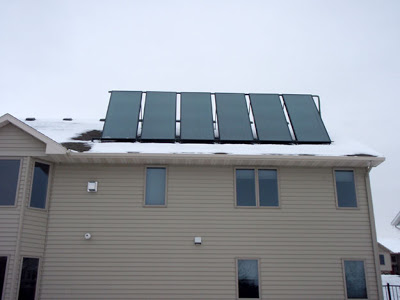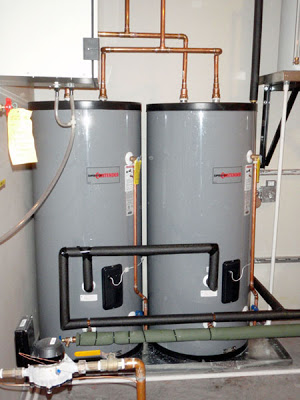by jboullion | Feb 13, 2009 | Uncategorized
From a new release posted on WQOW-TV, Eau Claire:
Eau Claire (News Release) – With the Wisconsin Department of Transportation in Eau Claire today to receive public comment on its “Connections 2030” long-range transportation plan, the West Central Wisconsin Rail Coalition is seeking changes to the plan that would include the region in WisDOT’s plans for a high speed rail network.
Members of the coalition applaud much of the philosophy of the draft Connections 2030 plan, which includes a major state policy goal to provide Wisconsin citizens with more transportation choice by improving passenger train service and other non-automobile travel options. In the draft plan, WisDOT says it “envisions a 21st century intercity passenger rail system that links the Midwest region’s major economic centers.”
Unfortunately, West Central Wisconsin is not included in that network, which would be built in three phases with routes serving Chicago-Milwaukee-Madison-La Crosse-St. Paul and Milwaukee-Green Bay. The plan only promises to “consider” service to area once the entire network is completed more than a decade from now.
The Coalition points out that West Central Wisconsin – which encompasses the Chippewa Valley and St. Croix Valley areas from Eau Claire/Chippewa Falls through Menomonie and Hudson/River Falls – is one of the fastest growing population areas in the state, growth that could be stunted if the area is left out of the network.

by jboullion | Feb 12, 2009 | Uncategorized

From the Web site of Energy Concepts, located in Hudson, Wisconsin:
One hurdle on this project was convincing the sub-division association that the solar panels would not take away from the development’s overall aesthetics and that it complied with existing covenants, which it did.
This is a custom-designed combination domestic hot water and in-floor space heating system.
The homeowners received $2,500 for the project from a Focus on Energy Hot Water Grant and another $3,500 from the Solar Space Heaitng Progam, a program of utility members of WPPI Energy.
Two 119-gallon tanks (below) hold the solar heated water until it circulates under the floors to heat the house.

by jboullion | Feb 10, 2009 | Uncategorized
From an article by in the Wisconsin State Journal:
A Michigan utility company wants to build what it’s calling the Green Power Express, a super-sized transmission line that would link wind-power farms around the Midwest and carry their electricity to urban areas where the power is needed. . . .
The proposal would involve building massive 765-kilovolt transmission lines — nearly twice the capacity of the biggest lines now running through the state, at 345 kilovolts — and would run through parts of North Dakota, South Dakota, Minnesota, Iowa, Wisconsin, Illinois and Indiana.
A conceptual map has the line entering Wisconsin at the state’s border with Minnesota and Iowa, about halfway between La Crosse and Prairie du Chien, and heading east toward what appears to be the Madison area. An ITC official did not provide site details. . . .
Wisconsin regulatory officials, utility companies and environmentalists agree that more line capacity is needed to transport electricity generated by the growing number of wind farms. But they’re not sure ITC’s plan for giant-sized lines is the answer.
Michael Vickerman, executive director of the Madison environmental group, Renew Wisconsin, said he has “reservations” about the need for 765-kilovolt lines. Smaller transmission upgrades can accommodate new wind generation, he said.
Wisconsin Public Service Commission Chairman Eric Callisto also has questions.
“I don’t want to close any doors to what they have proposed but I have lots of grave concerns about the cost,” he said. ITC is proposing “very large lines” that would require “very large right-of-ways,” Callisto said. A right-of-way is the legal permission to use a property owner’s land or the area above it.
Callisto is part of a five-state panel — involving Wisconsin, Iowa, Minnesota North Dakota and South Dakota — discussing how to move electricity east from windier western states, and how to pay for that. The group has been looking into 345-kilovolt lines, Callisto said, and hopes to make recommendations this fall.
“We have to make sure that what we’re paying for benefits Wisconsin ratepayers,” he said.
In light of that effort, ITC may be a bit premature, a spokesman for Alliant said.
by jboullion | Feb 9, 2009 | Uncategorized
From a blog entry by Tom Content on JSonline.com:
A major power line network linking the windiest parts of the Midwest with Milwaukee and Chicago was unveiled today by a Michigan transmission utility.
There’s no word on how such a project would get built, given longstanding opposition to major high-voltage power line projects, but ITC Holdings Corp. (ITC) said it seeks to address the inability of the nation’s power grid to move power around.
ITC has named its project the “Green Power Express.” The express would come through Wisconsin, linking the Madison area with northeastern Iowa and southern Minnesota, according to a conceptual map prepared by ITC.
“The Green Power Express will create the much-needed link between the renewable energy-rich regions of the Midwest and high-demand population centers,” said Joseph L. Welch, chairman, president and chief executive of ITC, a transmission utility that is based in Novi, Mich.
The project carries a price tag of $10 billion to $12 billion and would span 3,000 miles in Wisconsin and six other states with power lines that carry 765,000 volts of electricity. These lines are capable of carrying much more electricity than the largest lines in Wisconsin, which are 345,000 volts.
The project aims to address one of the biggest hurdles seen to having Wisconsin and other states meet targets that would require as much as 25% of the state’s electricity to come from renewable sources of energy, such as wind and solar, by 2025. Some of those hurdles were described over the weekend in the New York Times.
In short, the best sources where renewable energy can be produced — states such as the Dakotas and Iowa — areas that are far from population centers where most electricity is consumed.
by jboullion | Feb 6, 2009 | Uncategorized
From an article in the Stoutonian:
In a report released by Wisconsin’s Department of Administration, the University of Wisconsin-Stout has once again been found to be the most energy-efficient campus in the UW System.
The report “Energy Use in State-Owned Facilities” based its findings on the energy consumption of all UW campuses. Energy consumption is monitored through the campuses’ utility bills and fuel consumption. UW-Stout has led the UW System in energy efficiency for over 10 years. Last year, the report found UW-Stout to be 30 percent more efficient than the UW System’s average.
According to UW-Stout’s media release and Physical Plant Director Ted Henzel, energy efficiency comes from the precise maintenance and cleaning of the school’s physical plant by UW-Stout’s maintenance workers.


